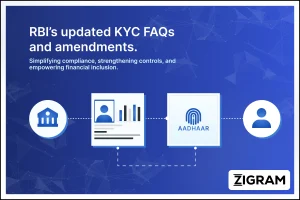The rise of cryptocurrency and virtual assets has transformed the financial landscape, providing individuals and businesses with new opportunities for investment, transactions, and decentralized financial systems. However, the emergence of these digital currencies has also raised concerns about security, fraud, money laundering, and market volatility. As a result, governments and regulatory bodies around the world have been grappling with the task of establishing a regulatory framework to ensure the stability and integrity of this evolving sector. In this blog post, we will explore the regulatory landscape of cryptocurrency and virtual assets, highlighting key developments and challenges faced by policymakers and industry participants.

Early Challenges and Regulatory Response:
Cryptocurrency’s early days were marked by a lack of regulatory oversight, with governments struggling to comprehend and adapt to this new form of digital finance. This resulted in various challenges, including security breaches, market manipulation, and illicit activities facilitated by cryptocurrencies. In response, regulatory bodies began to address these concerns through a combination of enforcement actions, guidance, and legislation.
Diverse Global Approaches:
Different countries have adopted diverse approaches to regulating cryptocurrency and virtual assets. Some nations, such as Japan, Switzerland, and Malta, have embraced cryptocurrencies by introducing comprehensive regulatory frameworks that aim to foster innovation while safeguarding investors and consumers. On the other hand, countries like China have taken a more restrictive approach, banning initial coin offerings (ICOs) and cracking down on cryptocurrency exchanges. The United States has pursued a patchwork of regulations, with various agencies asserting jurisdiction over different aspects of the cryptocurrency ecosystem.
Regulatory Objectives and Principles:
Regulatory frameworks for cryptocurrencies and virtual assets typically aim to achieve several key objectives. These include investor protection, anti-money laundering (AML) and counter-terrorism financing (CTF) measures, consumer safeguarding, market integrity, and financial stability. Policymakers strive to strike a balance between promoting innovation and mitigating risks, recognizing the potential benefits of these technologies while mitigating their downsides.
Evolving Regulatory Trends:
Regulatory trends in the cryptocurrency space continue to evolve as the technology and its applications develop.
Key areas of focus include
a. AML and KYC Compliance: Authorities are increasingly emphasizing anti-money laundering and know-your-customer compliance to address concerns about illicit activities and terrorist financing.
b. Stablecoins and Central Bank Digital Currencies (CBDCs): The emergence of stablecoins and CBDCs have raised questions about their regulatory treatment, with central banks exploring their digital currencies and considering the potential risks and benefits.
c. Security Token Offerings (STOs): Regulators are evaluating the classification of security tokens and their compliance requirements, as these tokens represent ownership interests in traditional assets and fall under existing securities regulations.
d. International Cooperation: Given the global nature of cryptocurrencies, international cooperation and coordination among regulatory bodies are becoming increasingly important to address cross-border challenges and harmonize regulatory approaches.
The Way Forward:
The regulatory landscape for cryptocurrency and virtual assets is likely to continue evolving as governments and regulatory bodies refine their understanding and response to this rapidly changing sector. Striking the right balance between regulation and innovation will be crucial to foster growth, maintaining market integrity, and protecting stakeholders. Collaborative efforts between regulators, industry participants, and other stakeholders will be essential to establish effective regulatory frameworks that facilitate responsible and sustainable growth in the cryptocurrency ecosystem.
Conclusion:
The regulatory landscape surrounding cryptocurrency and virtual assets is a complex and evolving one. While challenges persist, regulators worldwide are taking steps to develop appropriate frameworks that balance innovation, security, and investor protection. As the industry continues to mature, policymakers, industry participants, and consumers must engage in open dialogue and collaboration to navigate this evolving landscape successfully. Ultimately, the effective regulation.
ZIGRAM is the one-stop solution for all your compliance needs. Try our FREE DEMO to experience what you’re missing in your AML and KYC processes!
- #CryptocurrencyRegulation
- #VirtualAssets
- #eCommerceFraud
- #FinancialInnovation
- #RegulatoryChallenges
- #GlobalApproaches
- #AML
- #FraudPrevention
- #KYC
- #ConsumerProtection
- #MarketIntegrity
- #CBDCs
- #STOs
- #RegulatoryEvolution
- #CollaborativeApproach






